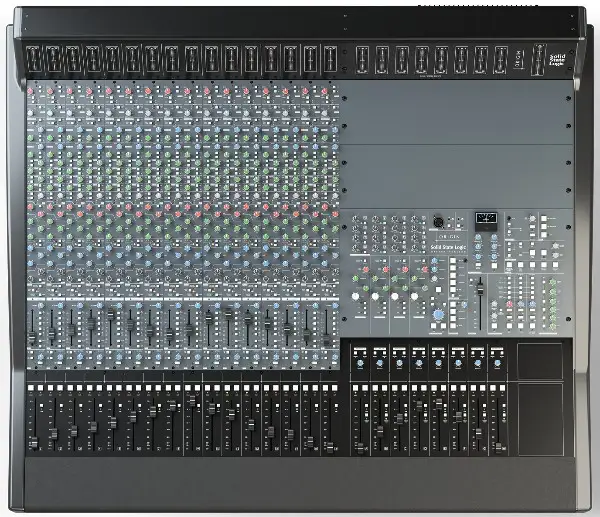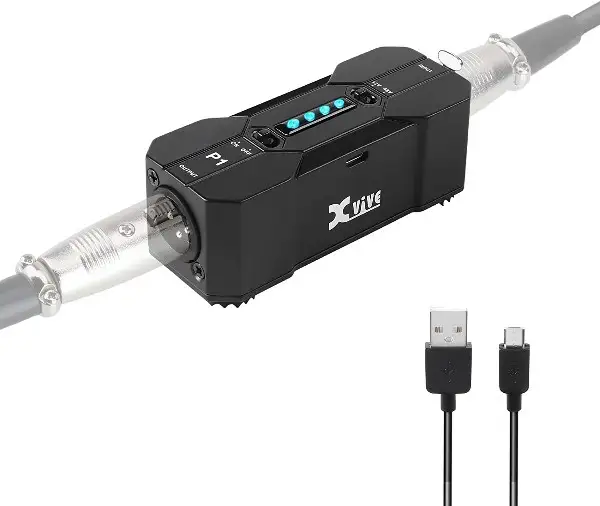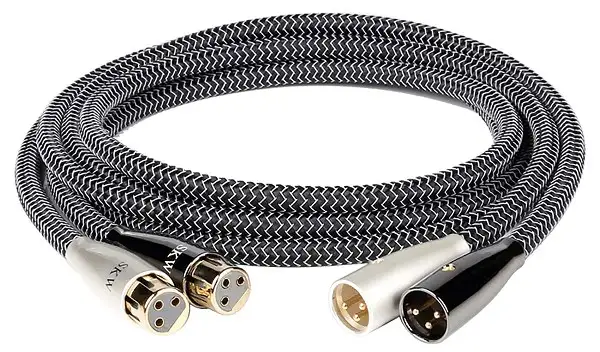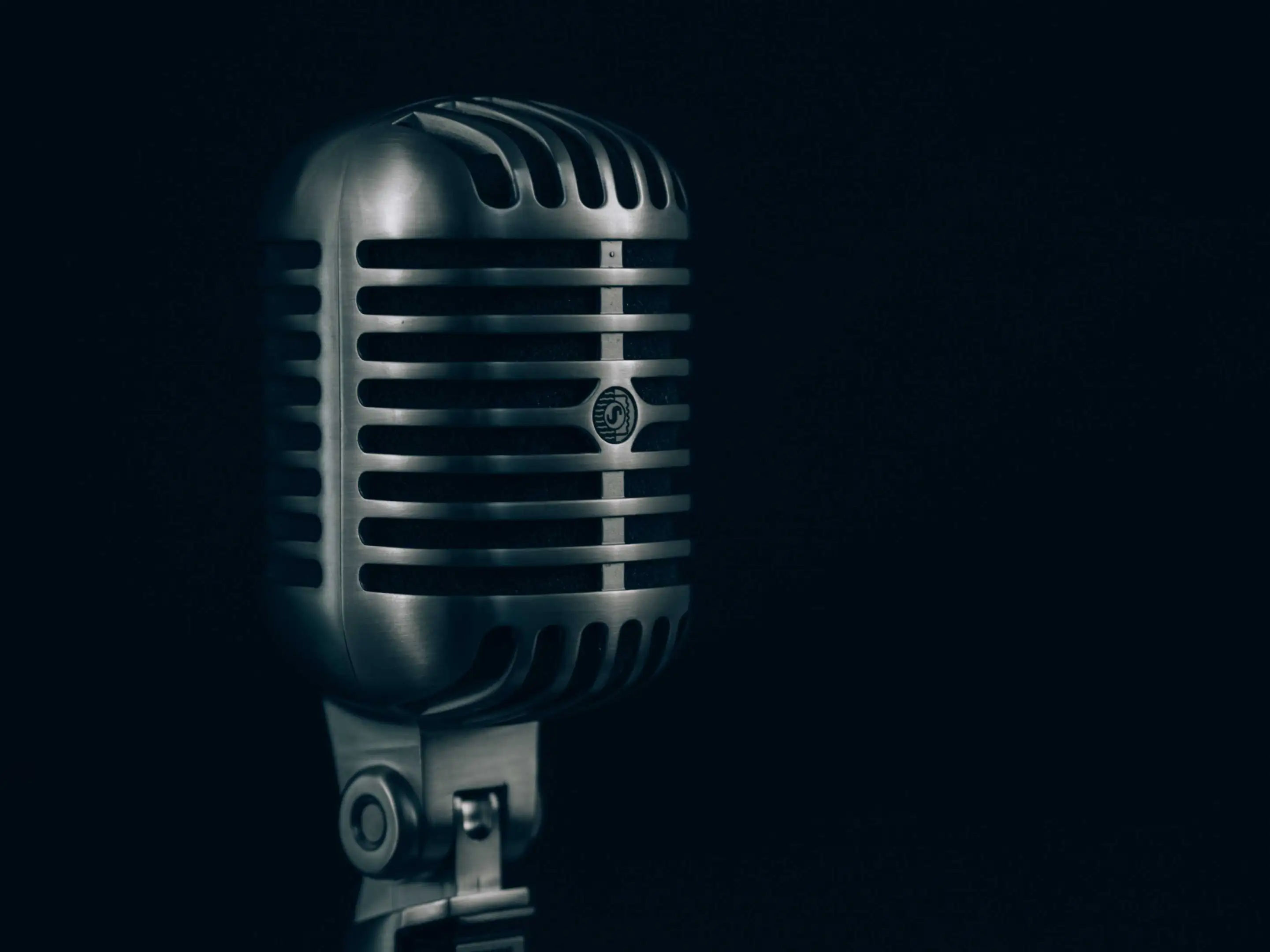Alrighty folks - it's tech time once again! You may have heard of phantom power, and even use it regularly. But do you know what it is, and how it works?
In this article we're going to look at everything phantom-y. By the time you're done reading you'll be able to hold your own next time the formidable microphone conversation strikes up in the pub.
What Is Phantom Power Exactly?
In a nutshell, phantom power is a direct current (DC) signal sent to microphones in order to power the active circuitry inside.
While the accepted standard for phantom power around the world is 11 - 52 volts dc, most studio mics run on 48V.
It's called phantom power because it's discreet - the current is sent along an XLR cable from the microphone input.
Do All Microphones Need Phantom Power?
Not all microphones work in the same way; some are passive, and some are active, and it's the active microphones that need phantom power.
You may have heard the general rule that condenser microphones require phantom power, and dynamic mics don't. For the most part this is the case, but there are exceptions to the rule; some condenser microphones don't need phantom power, and some dynamic microphones do. More on that later.
Can Phantom Power Damage Mics?
Most modern dynamic microphones are designed to accept phantom power even if they don't need it to work. So it's (generally) considered safe to use a mixture of dynamic and condenser mics on a console or interface supplying phantom power universally to all mic inputs.
On the other hand, an active ribbon microphone requires phantom power, but can be damaged if you 'hot plug' it - connecting it to the mic input with the phantom power switched on.
If you're using TRS connections on a patch bay damage can also be done to any microphone when hot switching connections. Because the connections on a TRS cable are designed sequentially, electrical shorts happen when plugging or unplugging the cable. If the phantom power is on this can wreak havoc with your mic collection.
This is all quite sciencey, so if it's a bit hard to digest a good safety measure is to turn off the phantom power supply before plugging/unplugging any microphone.
Can Phantom Power Damage Other Equipment?
Since phantom power is only routed through the mic signal the DC current isn't going to affect anything else connected to your interface or console. Wireless mic receivers are balanced and can handle the DC voltage safely.
However when you connect or disconnect XLR cables leaving the phantom power on can result in clicks or pops, which could in time damage your speakers or headphones. So it's generally a good idea to disable phantom power when plugging or unplugging your mics.
Can Phantom Power Damage Me?
Unless you're particularly sensitive to DC power, the answer is no.
How Do You Send Phantom Power
There's three main sources of phantom power supplies:
- Audio interfaces
- Mixing consoles
- Microphone Preamplifiers
Audio interfaces
Most audio interfaces come with the option of turning phantom power on or off. This can be a switch or a button located on the front or back panel of the interface. Often this will send power to all the mic inputs and channels can't be isolated individually.

Mixing consoles
Smaller mixers may also have a single button to provide phantom power for all the channels
On larger mixing consoles you'll find that each channel has a dedicated phantom power button, allowing you to chose which mics make use of it.

Microphone preamplifiers
Mic preamps will also have dedicated phantom power switches. Depending on how fancy it is you may have individual control over each channel, or have a 'one button to rule them all' phantom power option.

Sorted, right?
Not necessarily. On some lower-end models the voltage supplied by phantom power may not be up to scratch, and deliver less than the 48V needed. While some condenser microphones can operate on less voltage, others need the full 48V to work the active electronics in the mic.
Enter the external power supply.

If your interface isn't cranking out the necessary voltage you can always use an external power supply to get that electric power to drive your active circuitry. Shazzam!
To add to this conundrum, some mics need more than 48V to work properly - pretty much all tube microphones for instance. In situations like these you'll need an external phantom power supply, often shipped with the mic itself.

Take a deep breath, because things are about to get technical...
The Super-Nerdy Tech Stuff
The aim of this section is to furnish you with a detailed understanding of how phantom power works, and why we need it.
First off, let's take a look at how sound is captured in condenser microphones.
Why Do Condenser Microphones Need Phantom Power?
Condenser mics work on what's called 'variable capacitance'. A variable capacitor is one that can be changed repeatedly, either mechanically or electronically. In condenser microphones this is what turns physical sound waves into audio signals.
A condenser microphone's transducer element - capacitor - is made up of a diaphragm and a fixed plate. Sound waves hit the diaphragm, causing it to vibrate, changing the distance between the diaphragm and the fixed plate (also known as the backplate). This change in distance creates a change in voltage maintained between the two, and this is the electrical signal that gets sent down your balanced XLR cable and turned into a glorious audio signal at the other end.
In addition to powering the capacitor, phantom power also provides the juice to a teeny tiny preamp inside the condenser mic. This preamp is used to magnify the small electrical changes from the capacitor before the signal leaves the mic.
You may already know that condenser mics are commonly more sensitive than dynamic microphones. It's the capacitor that makes them so acute to sound, and without a phantom power supply there as useful as a fish on a bicycle.
How Does Phantom Power Work?
Standard phantom power is generally 48 volts dc (direct current). This is usually provided by a mixer or interface, and sent via balanced audio cables.
In a balanced XLR cable, the 48 volts is sent through pins 2 and 3 (the positive and negative audio audio), and referenced to pin 1 - the return, which is also the ground pin.
In a balanced TRS audio cable the 48V is sent through the tip and ring relative to the sleeve.
Since the voltage is sent through a balanced audio cable it doesn't interfere with the audio signal.

Once the voltage reaches the microphone it's sent where it needs to go to power the active electronics.
Balanced microphones that aren't phantom powered - for instance a dynamic microphone - are designed to ignore this voltage, and will generally not be damaged if 48 volts is being sent through the XLR cable.
But if you have unbalanced microphones like ribbon mics do not even talk about phantom power when they're out of their box.
OK, Cool. So Which Microphones Actually Need Phantom Power?
So now you know that active microphones need power to do their jobbo I'm going to throw a spanner in the works and say that while most microphones in this category use phantom power, not all do.
But let's keep this short and sweet. The following types of microphones need a phantom power supply to function:
- True condenser microphones
- Electret FET condenser microphones
- Active FET ribbon dynamic microphones
And the following microphones don't need phantom power:
- Moving coil dynamic microphones
- Passive ribbon dynamic microphones
- DC-biased electret miniature microphones
- Tube microphones
Confusing, right?
The most prudent thing to do is RTFM to see if your microphone needs, and more importantly, can handle phantom power.
Do All Microphones Use 48V Phantom Power?
Although the universal standard for phantom power is 11-52 volts DC, most studio mics run on 48 volts, hence the +48 button on your audio interface. However different microphones sometimes need more or less than this to operate.
In the cases where a condenser microphone needs less phantom powering than 48V it'll just take what it needs, and discard the remaining volts in a feat of engineering magic that I don't fully understand.
When microphones need more than 48V phantom power they'll need an external supply. This is normally distributed with the mic itself, so not something you need to worry about. Unless of course you lose it.
Again, if in doubt, read the manufacturer's instructions regarding how many volts your mic needs to work.
Other Sources of Power
Sometimes folks refer to phantom power when in fact they mean one of the following sources of power. Don't get them confused; it's all a lie.
Battery
Phantom power is not the only source of voltage for microphones. Some condenser microphone models on the market make use of a battery to power the circuitry inside. It's always a good idea to remove batteries when not in use to prevent corrosion and damage to the internal workings of the mic.
Plug-In Power
Plug-in power (PiP) is a low current supply that's found on some consumer-grade gear like portable recorders and computer sound cards. This is an unbalanced, low voltage interface and as such very different from phantom power. Never use 48V phantom power with a microphone that's designed for PiP.
DC Bias Voltage
The term phantom power is sometimes used to describe the small electric current that powers aviation microphones. While technically it is 'phantom' (it can't be seen), it runs on a much lower current - 1.5-9 volts. In audio engineering situations it's generally used to power microphones like miniature lav mics.
Other Uses For Phantom Power
Since we're going deep, phantom power is used in other areas, not just in microphones. These include:
- Active antennas
- Low noise block downconverters (the thingummy on satellite dishes that takes the signal and converts it)
- Power over ethernet cables
A Brief History of Phantom Power

Phantom powering was first used in landline telephone systems based on copper wire in the early part of the 20th century. It's still used in this capacity today, although how long landlines will be around is another topic of discussion.
Tube microphones came on to the market in the 20s (1920s that is), followed by a breakthrough in the 40s from Bell Labs in the form of transistors.
This in turn led to the release in 1964 of the Schoeps Model CMT20, the first commercially available phantom powered microphone. Back in those days however these kinds of microphones came with bulky external power supplies which had to be located close to the microphone itself.
A combination of Norwegian desires and German smarts led to the development of what we know as phantom power today. NRK - the Norwegian broadcasting corporation - had requested phantom powering microphones that didn't need a separate power supply, since they already had a 48 volt power supply running in their studios for emergency lighting.
Neumann stepped up to this task, and developed a mic that would on the 48 volts of DC power already in place in the NRK studios.
This was the first methods to power condenser microphones through an audio cable, and thus was born the modern day phantom powered microphone.
Conclusion
So there you have it - everything you need to know about phantom power, and some extra tidbbits to boot.
Choosing the right microphone for the job is important, regardless of whether it uses phantom power or not. Check out our article on microphones types to help you work out which one(s) are right for you.
Now go forth and capture those sounds!





